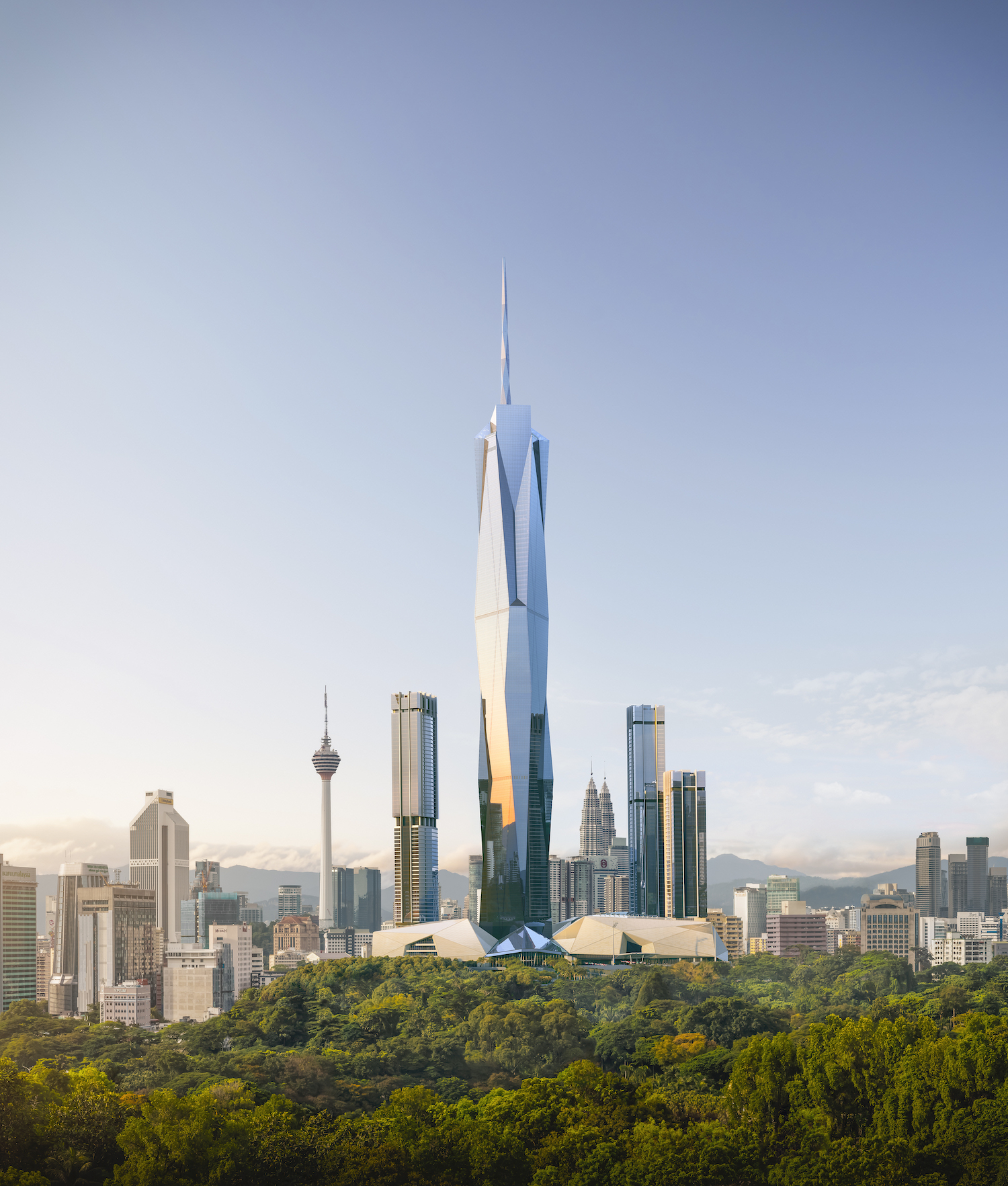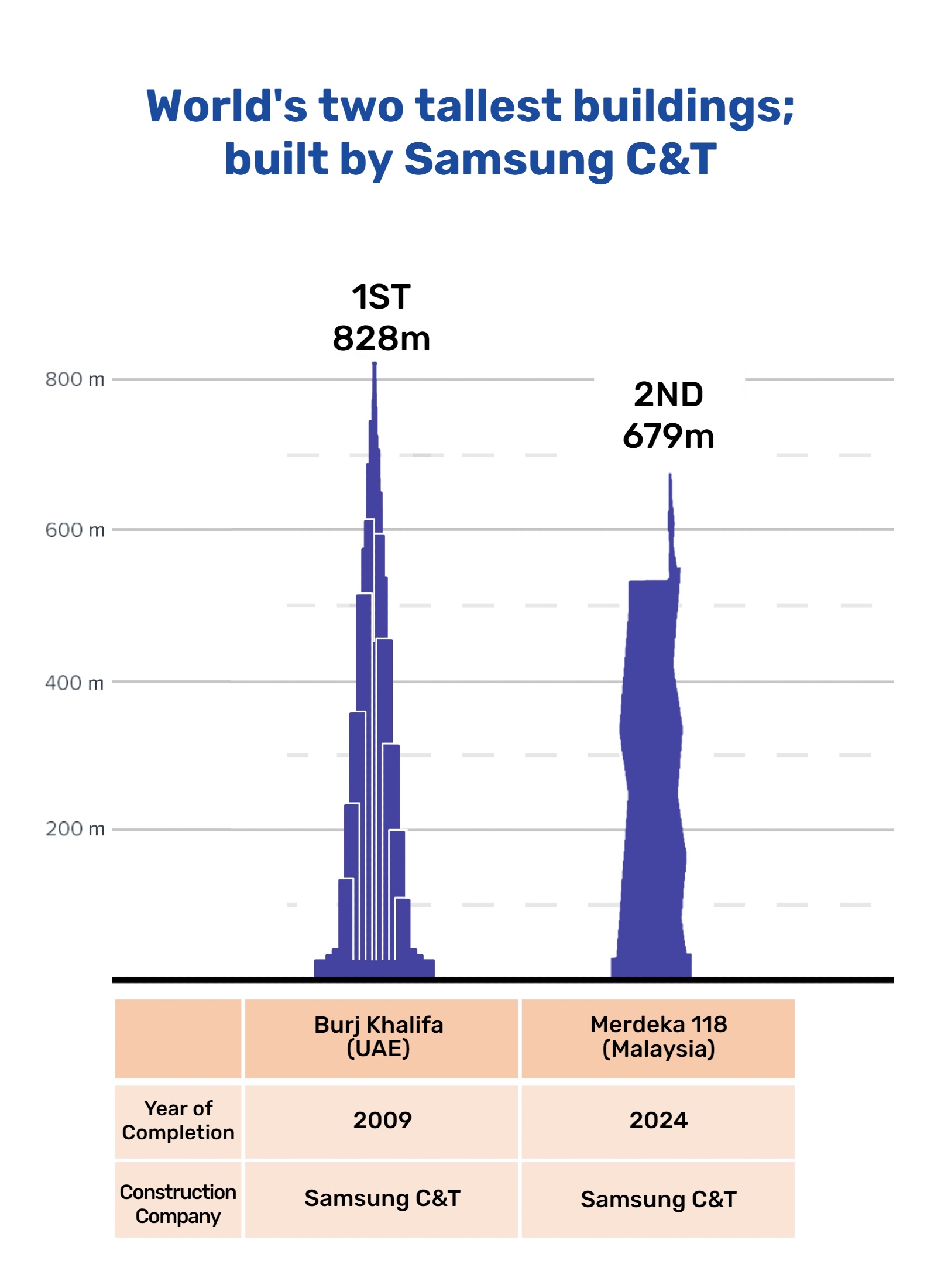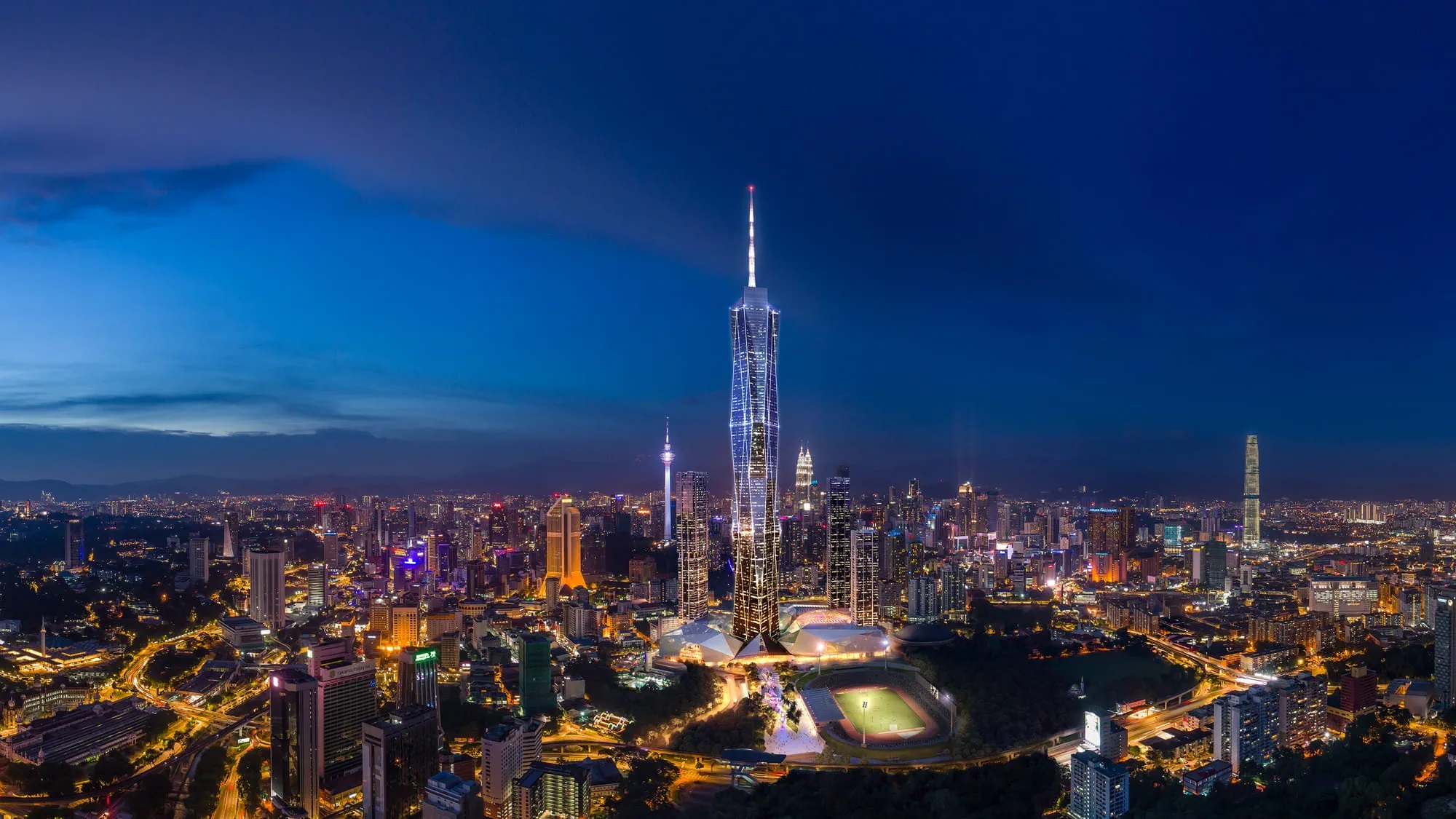On Jan. 10 in Kuala Lumpur, Malaysia, the landmark Merdeka 118 skyscraper, constructed by Samsung C&T Engineering & Construction Group, was officially opened in the presence of assembled dignitaries. The Merdeka 118 — “Merdeka” means “independent” in Malay — is the second-tallest building in the world, after the Burj Khalifa in Dubai, which was completed in 2009, also by Samsung C&T E&C Group.
Let’s learn more about this impressive tower, the Merdeka 118.
What is the Merdeka 118?
The newly opened Merdeka 118 towers over the center of Kuala Lumpur, Malaysia’s capital, at 679 meters in height. The building was designed by Fender Katsalidis, an architectural firm based in Melbourne, Australia, and constructed by Samsung C&T Construction and Engineering Group. The structure itself stands a little over 500 meters tall, and it is topped by a spire that adds a further 160 meters. There are a total of 118 stories, with five below ground, and the total floor area is 673,862 square meters in size — equivalent to the combined area of 94 soccer fields.
The tower is a large, complex facility that is expected to contain offices, high-end hotels, and shopping malls. As the crowning achievement, an observatory with a panoramic view over Kuala Lumpur will be installed on the top floor. This last touch is expected to make the Merdeka 118 a world-class landmark.
Challenges in building the Merdeka 118
To construct Merdeka 118, with its innovative design and towering height, the most advanced construction technologies were employed. First, the amount of high-strength concrete used was 400,000 cubic meters, which would cover a football field to a height of 19 stories in one solid block. Understandably, moving liquid concrete up to the height where it is needed when building a skyscraper can be quite a challenge. Therefore, high-pressure pumping technology was used to pump the concrete up to the required height as the tower grew. To make the concrete stronger, 40,000 km of rebar was used, a length of metal that could almost stretch once around the Earth’s circumference. Furthermore, a global positioning satellite (GPS) system was used to make real-time height measurements. This helped to ensure the accuracy of the work.
To raise the 160-meter-tall spire, which weighs 933 tons, to the top of the tower, Samsung C&T used a method that pushed the spire up using a hydraulic jack so that a tower crane would not be necessary.
Building tall in Malaysia and around the world
With the Dubai Burj Khalifa (163 stories, 828 meters tall) and now the new Merdeka 118, Samsung C&T Engineering & Construction Group has now built the tallest and second-tallest buildings in the world, which is a significant achievement.
Samsung C&T E&C Group is consolidating its status in the Malaysian construction market, too. As well as the tallest building in Malaysia, the newly opened Merdeka 118, the Group has also built the third largest, Petronas Towers, which are 452 meters tall and were the tallest buildings in the world when completed in 1998. More recently, the Group has been constructing several landmark projects in Malaysia, including Star Residences, a luxury residential complex (and Malaysia’s tallest residential structures) and the Sapura Building, the new headquarters of the Malaysia-based Sapura Group of companies.
Through Samsung C&T E&C Group’s construction technology and expertise, the Group was able to successfully complete many world-class landmark buildings. Based on such accumulated technology and trust with international customers, Samsung C&T plans to take on various business opportunities in the future.










